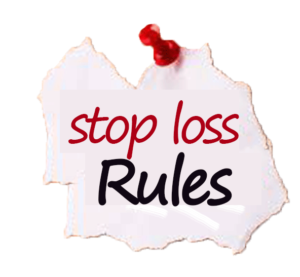In this lesson, we shall cover main rules of setting Stop Loss in Forex correctly.
Previously, we saw that a stop loss is meant to limit losses in case a trade goes against you. True.
However, when a stop loss is not set in a proper way, it is instead likely to increase your losses.
Rules of setting stop loss
Below are some of the rules of setting stop loss in forex
1) Set stops that match the volatility of the market conditions you are trading.
We now all know that the Forex market has different market environments;
The trending market and the ranging market.
When the market is trending,
It is makes strong price movements which is a sign of high volatility. Price is quick to hit targets and stops due to high volumes and speed.
During the periods of high volatility, you should set large stops enough to allow price fluctuations.
That way, you will not be hit out prematurely after a few pips against your entry point.
When the market is ranging,
Price movements are slow. At times it seems like there is no movements at all.
This indicates low volatility in the market because most of the traders are undecided about direction of the market.
If you hold a trade when price is ranging, you should not set you stops very far from your entry level.
This will give you a good risk reward since you don’t expect the market to trend for long in your desired direction.
2) Close out failed trades before reaching your stop loss levels.
When you close out a position after realizing it is a failed trade, you cut on your losses and release your margin capital held on that trade.
This gives you a room to plan for new opportunities in the market and you save some of your capital.
But make sure the closure is as objective as possible.
Do not close a trade just because you saw a small negative on your running trade. You should close a trade in regard to your trade management rules.
3) Do not widen your stop because a trade is going against you and about to hit your stop loss.
Most traders especially the new traders have a habit of widening their stop loss when a trade is getting close to it.
This is a very bad habit.
Once a trade has fails.
Pushing your stop loss further does not increase chances of a trade to turn back to your preferred direction. Instead it adds up on the losses to your account.
Instead of pushing your stop further, close out the trade and cut your losses.
There you save some of your money back to your account and take a small loss.
4) Do not set your Stop loss exactly on the levels of support and resistance.
Most traders believe that Support and resistance levels are market reversal levels.
Since most traders watch these levels, the prophesy tends to be true.
Price shows rejection as it moves towards these levels and most times reverses back to the opposite direction.
When you buy above the support level, don’t set your stop loss on the support because price is likely to retest the support level and then bounce back.
This also applies to the resistance levels when selling.
You should instead set your Stops slightly below the support zone or above the resistance zone to avoid hit & close out by retests.
Many traders have different ways of determining stops.
When it’s your first time, it may seem impossible to follow any of the rules but it is achievable.
The reason we advise you to start trading with a demo, is because we want you to first practice.
First practice different ways of placing stop losses and work on your trading plan. It may take time, but it is worth it to practice.
When you follow your stop loss rules, you increase the success rate of your strategy and reduce on trade losses.
ATTRIBUTES OF A SUCCESSFUL TRADER
As i had promised to discuss the attributes of a successful forex trader. These are the most important of all. It's as simple as understanding the mechanisms of a predator. What hurts new traders is that they can not distinguish between facts and opinions and they end...
- Oh, bother! No topics were found here.



